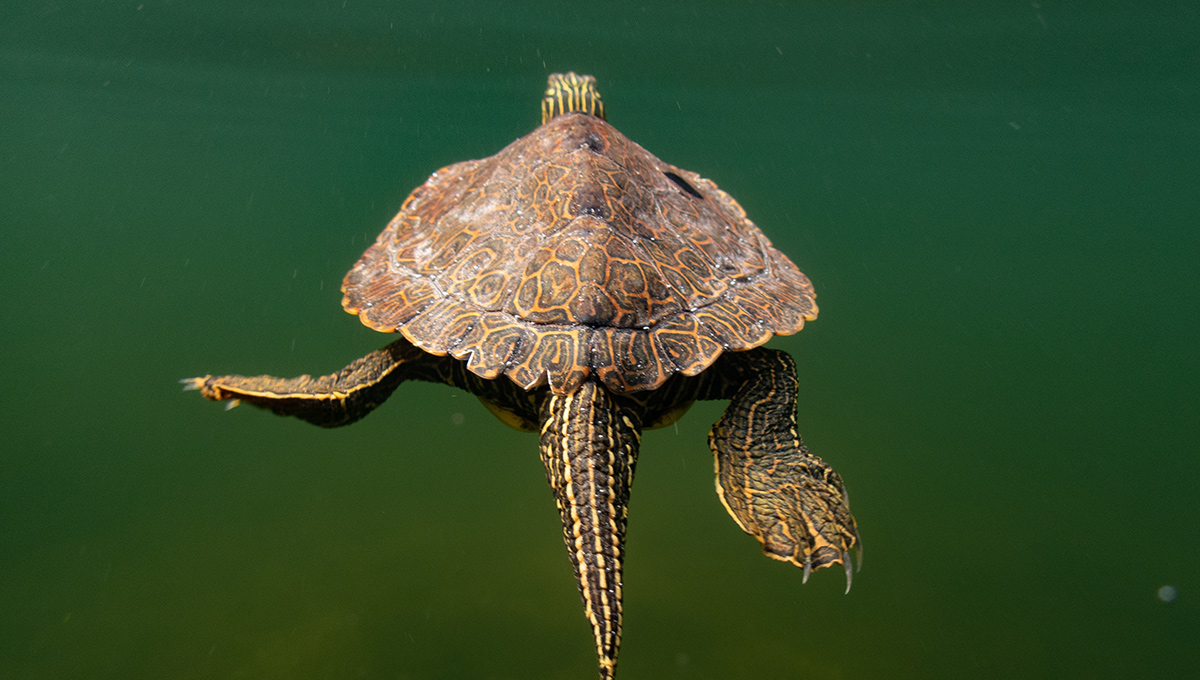By Tara Jackson
If someone made a sex tape featuring turtles, would anyone watch?
Turns out the answer is yes. Carleton Biology instructor and researcher Grégory Bulté has watched hours of video of turtle mating behaviour—all in the name of science.
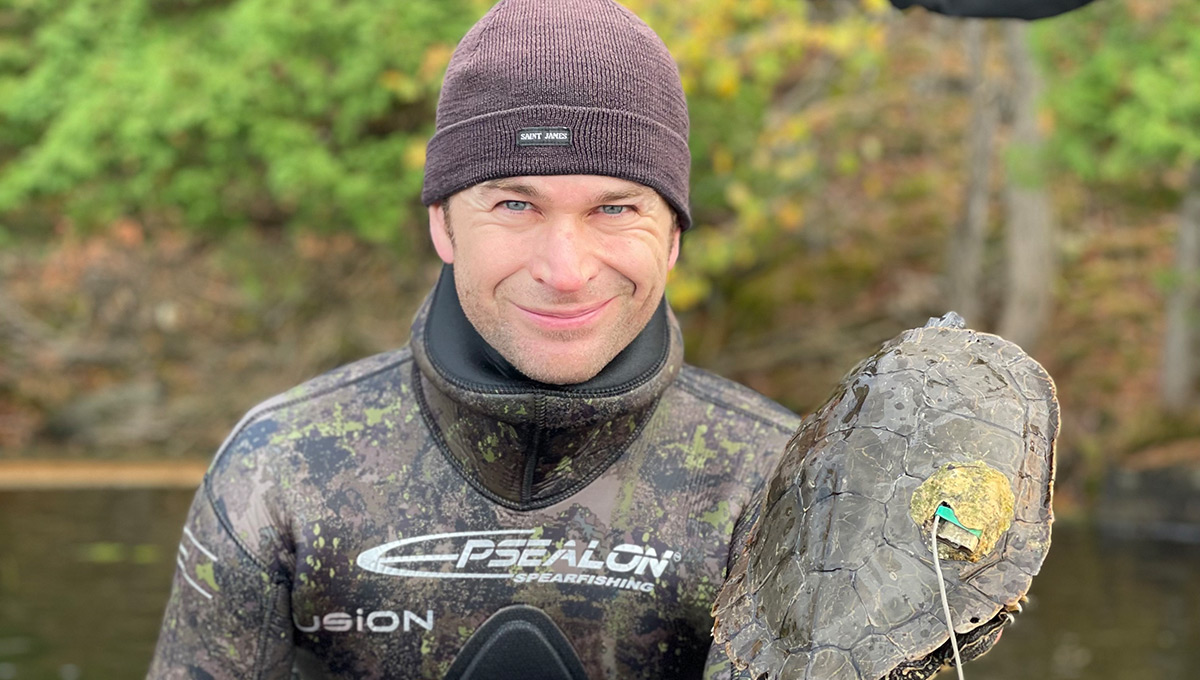
Grégory Bulté
Bulté, who teaches ecology and evolutionary biology, has studied a group of wild northern map turtles at their hibernation spot at Lake Opinicon, about 130 km southwest of Ottawa, for close to 20 years, examining their behaviours over time. While he’s been able to document and collect a great deal of data, one part of turtle life has remained a mystery: their reproductive habits.
“Turtles mate in murky water, so unless you can scuba dive and spy on them, there’s no way of knowing what they do,” says Bulté.
“This challenge is a bottleneck in our understanding of their behaviour.”
With a goal of turning a lens onto the unknown, and not wanting to disturb the turtles in the process, Bulté came up with the idea of using 3-D printed decoys to aid his study. Utilizing a 3-D scanner and printer, Bulté, and his then colleague Ryan Chlebak from the Biology department set about creating lifelike replicas of mature turtles (between about 12 and 29 cm in length). Through a series of scans of preserved specimens and photo files that had to be technically stitched together, the final models were printed in parts, and joined together. In order for the decoys to look as realistic as possible, another colleague, who also happens to be a wildlife artist, Ed Bruggink, was recruited to paint them.
Once complete, the decoys were submerged in the lake and Bulté focused cameras on them, allowing him to see how turtles approach the mating process.
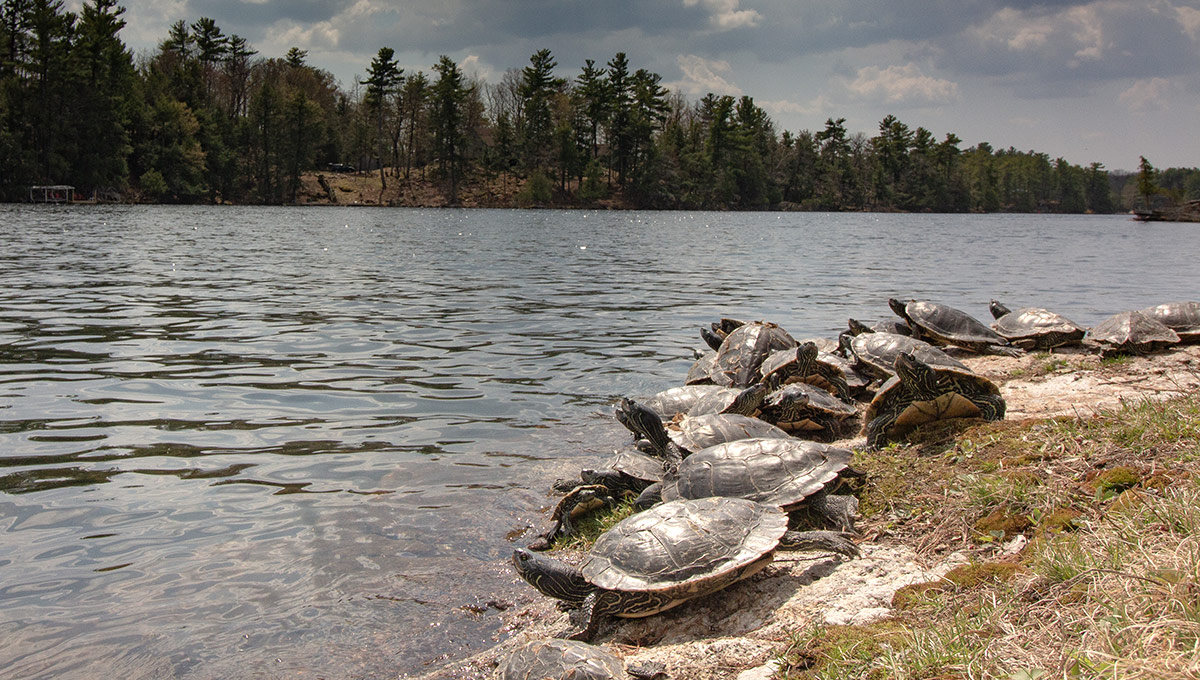
Intricacies of Mating
Bulté organized two different stations with the fake turtle decoys—one with just a single fake female and the other with one female and three male decoys.
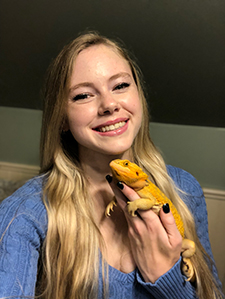
Brooke Huneault
“Map turtles typically form big groups prior to hibernation, which also happens to be when they mate, and we were curious to see if males were going to compete for females or if they would say, ‘Oh she’s busy I will go elsewhere,’” Bulté explains.
Analyzing footage of the turtle behaviour was paramount to the study, and then fourth-year biology student Brooke Huneault offered to lend a hand. As part of her honours thesis, Huneault viewed 180 hours of camera footage, looking for patterns.
“Some days were better than others,” Huneault says about the time she spent analyzing recordings on her computer.
“There’s very little information on turtle reproduction out there, so I was conscious of being a part of something new. Overall, it was a neat process and it was interesting to see the different interactions of the turtles and to identify repeat behaviours.”
Prior to seeing behaviour proof on camera, Bulté says he expected that the station with a single female decoy would be of more interest to the male turtles in an effort to reduce competition. But contrary to his predictions, he was surprised that the presence of fake males seemed to attract more male interest.
“We ended up seeing more visits to model with males around,” says Huneault. “It showed how much they’re taking social cues from each other, and it was interesting how often they would just investigate other males, sort of snooping around to see who was there.”
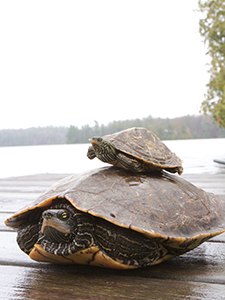 The footage also revealed insight into the way female turtles interacted with the decoy females, including getting on top of the models or rubbing their chins along them.
The footage also revealed insight into the way female turtles interacted with the decoy females, including getting on top of the models or rubbing their chins along them.
“The females seem to be interested in other females in a way that suggests a hierarchy,” says Bulté.
“We don’t quite know what that’s about just yet, but it will be cool to examine that social dynamic further. Turtles have more complex social lives than we think, which makes sense for beings that live for so long.”
So further study is warranted, with Bulté expressing a desire to add a scent component to the decoys to evaluate any difference it may make, adding that the relative low cost of the tech gear needed for these types of investigations make his research affordable.
Bulté continues to be one of the few researchers in the world to study mating turtles in the field and says he’s committed to filling in the gaps in our knowledge of animal behaviour—which means he has no plans to stop filming the private lives of these reptiles.
“I am a turtle voyeur,” he says.
